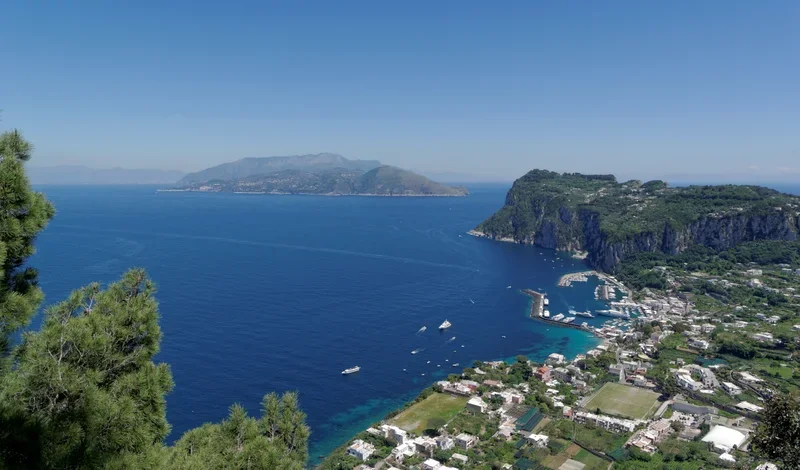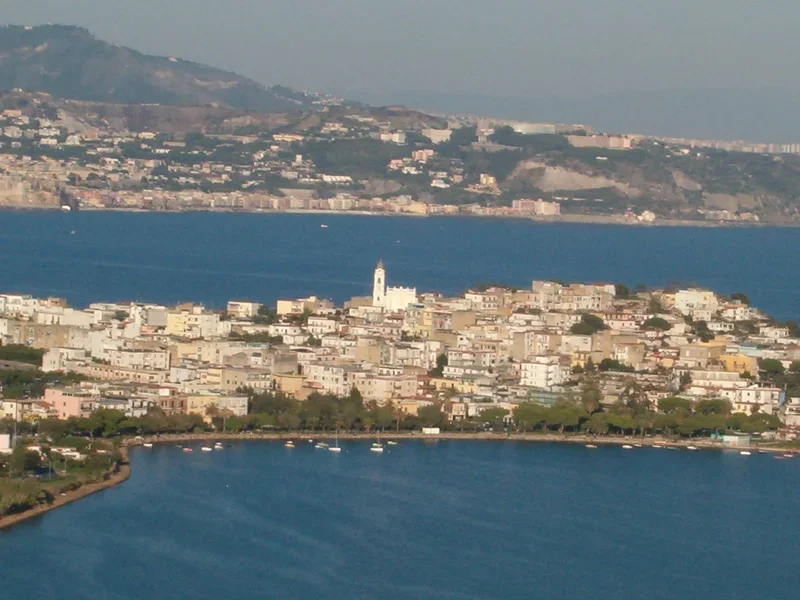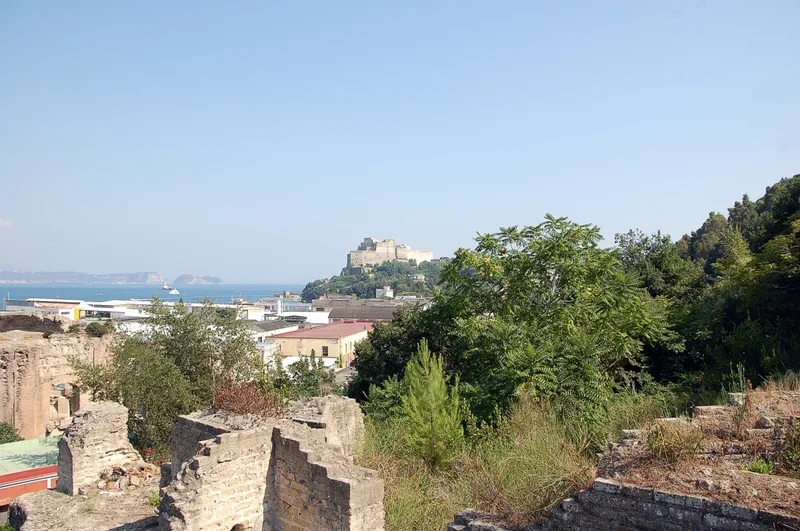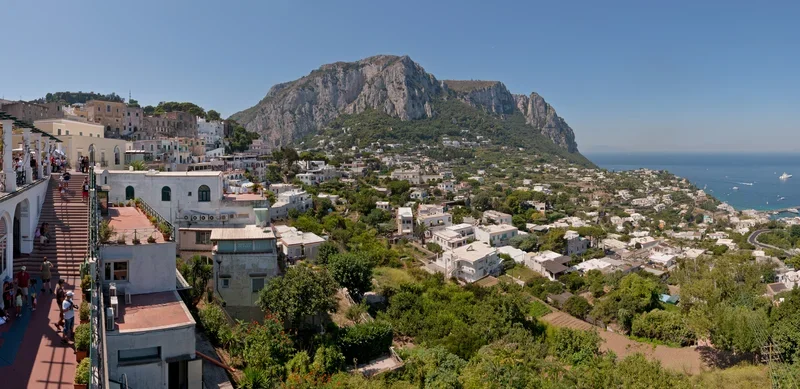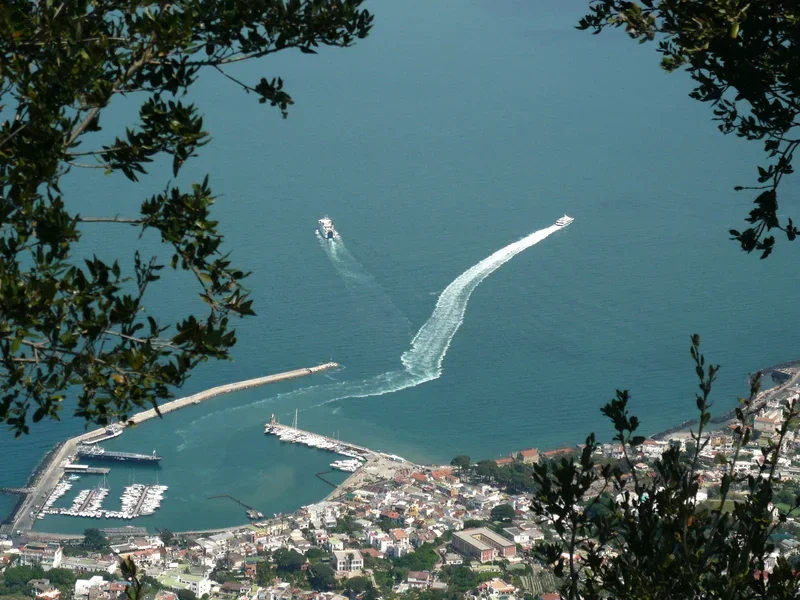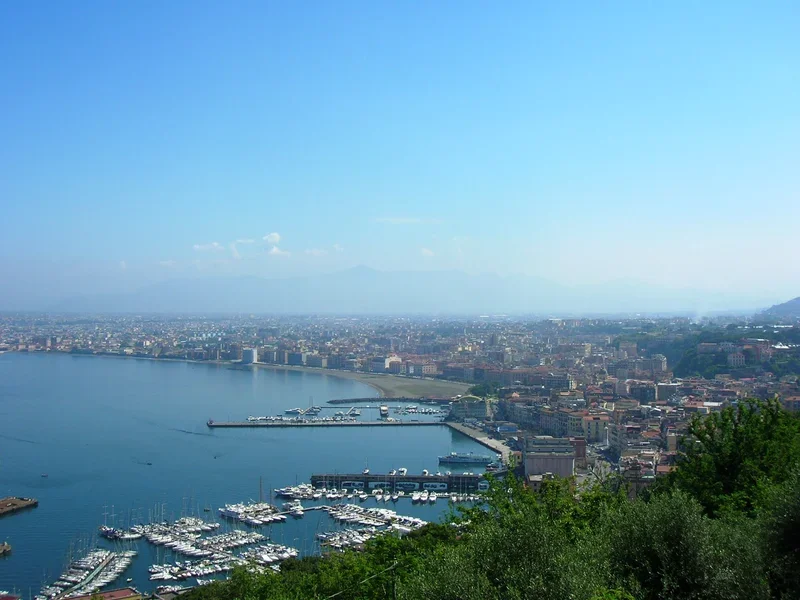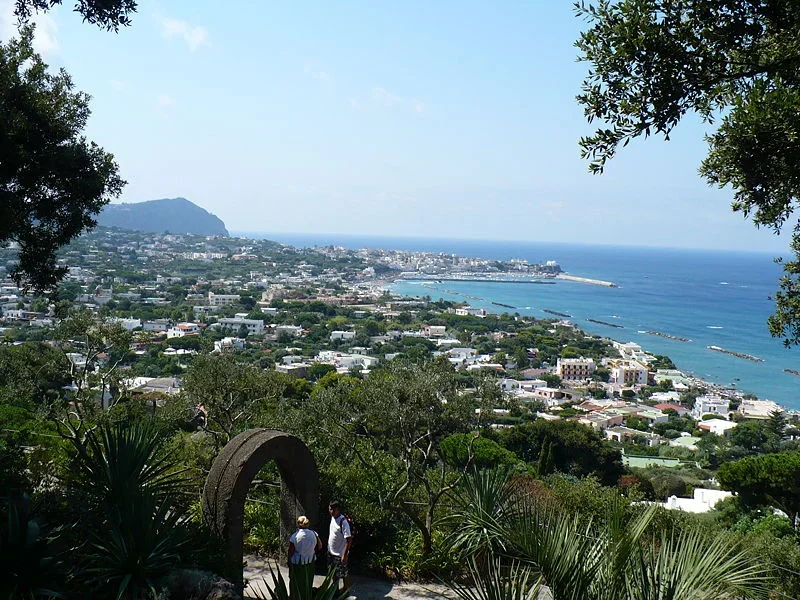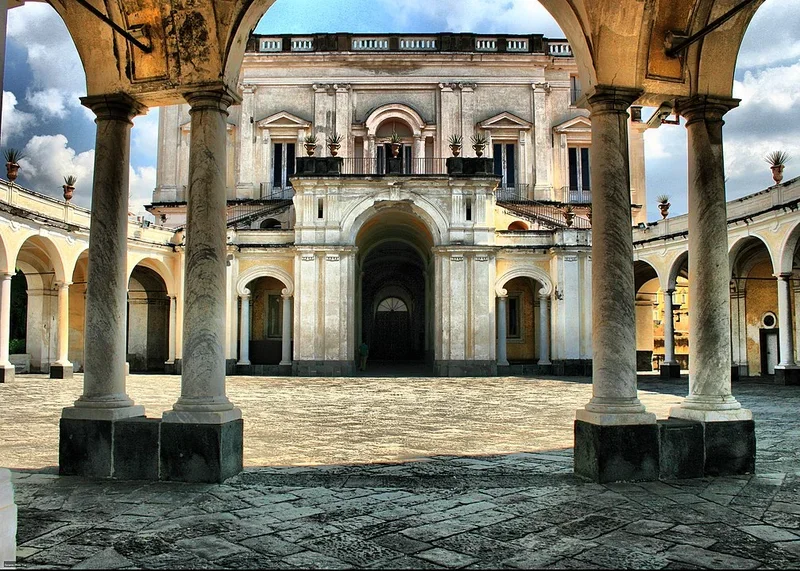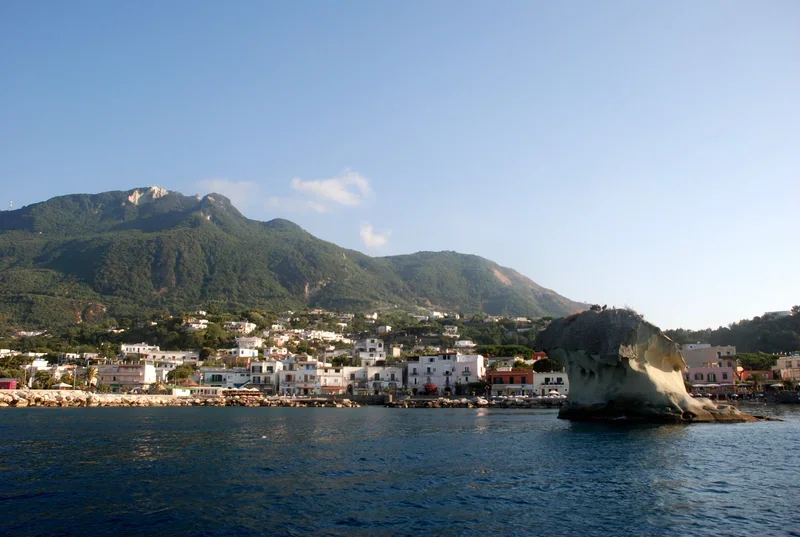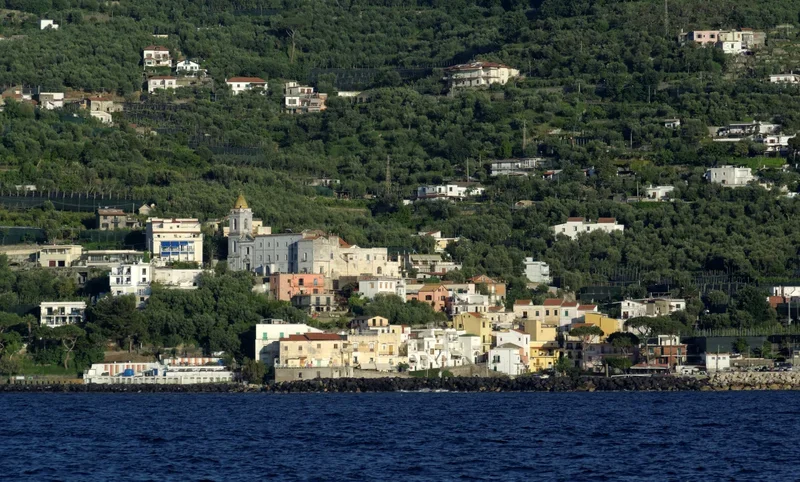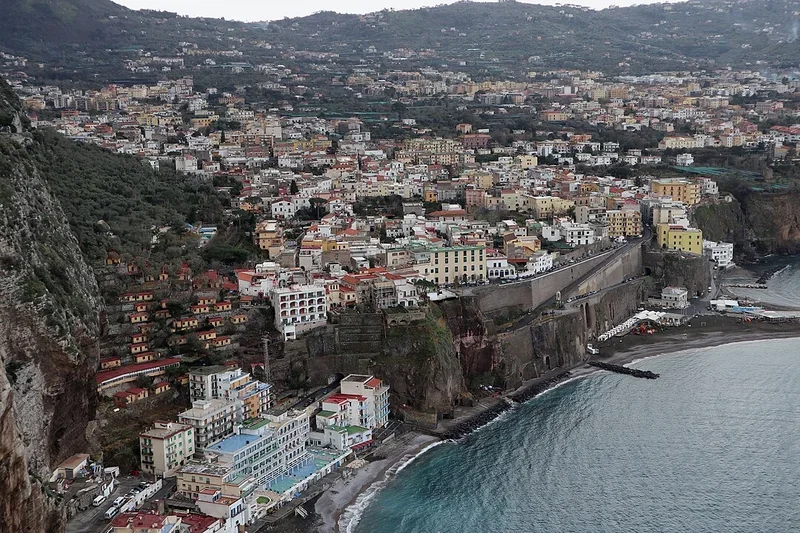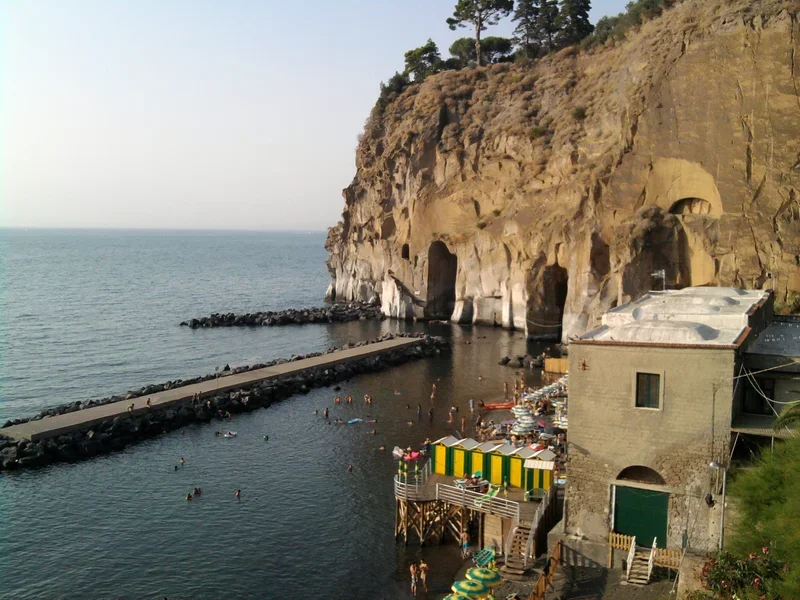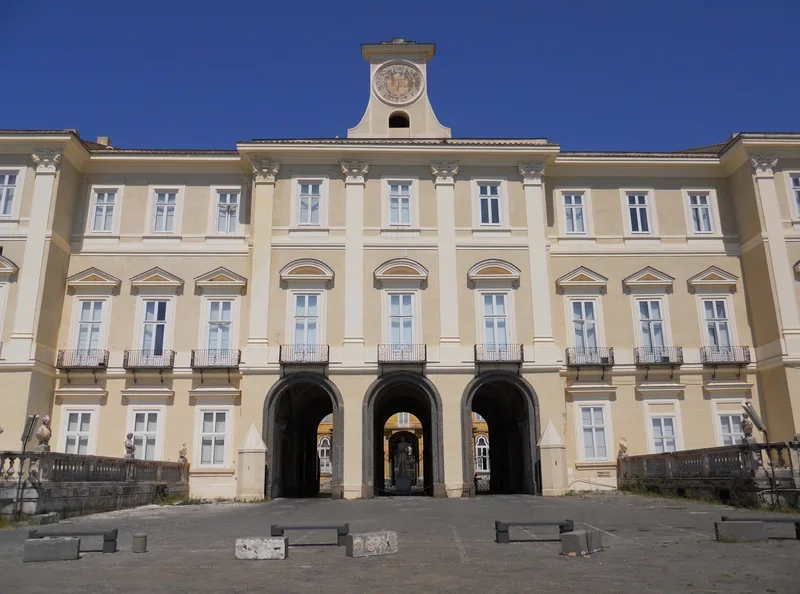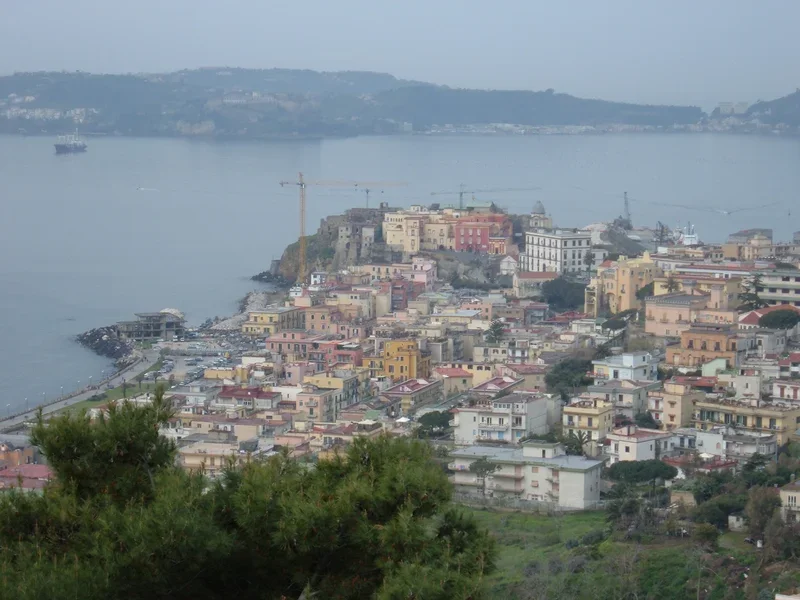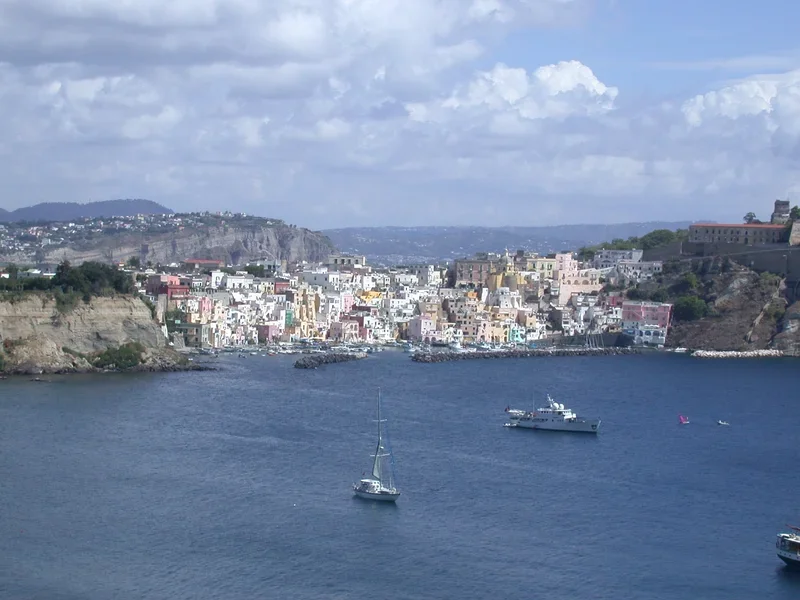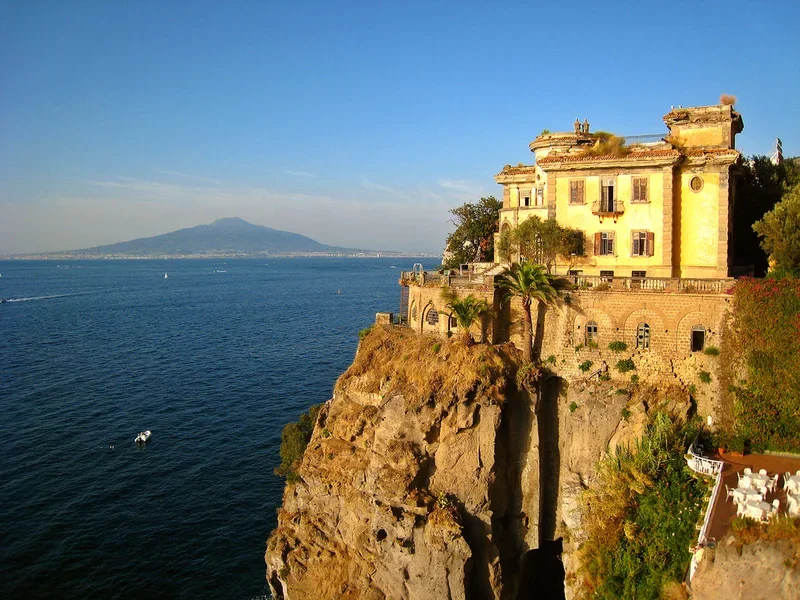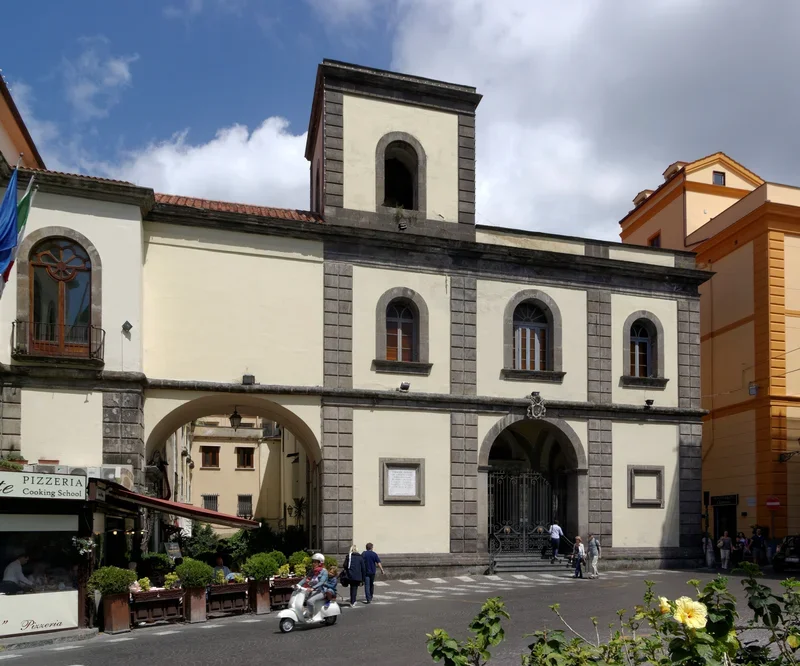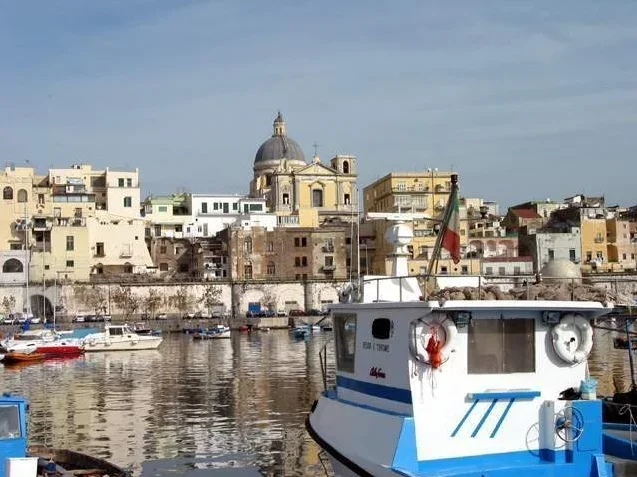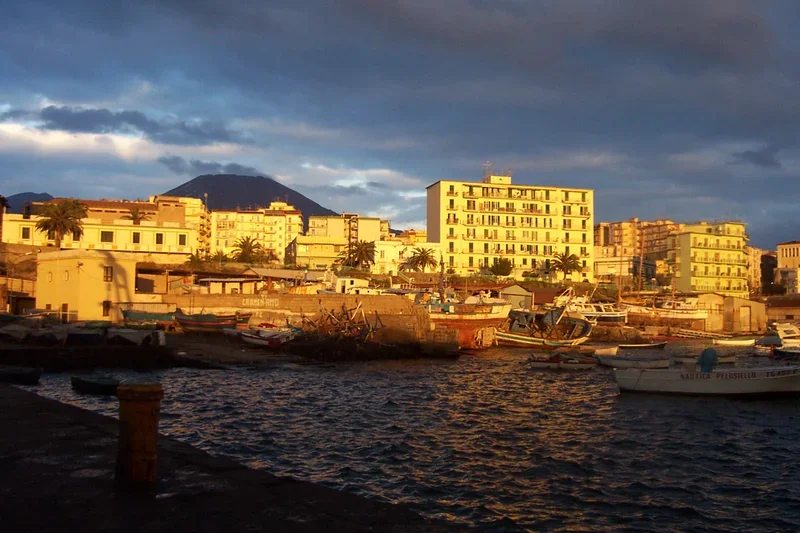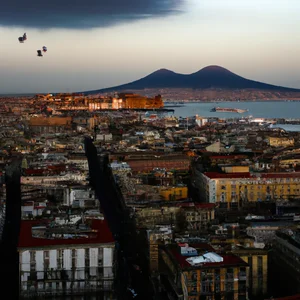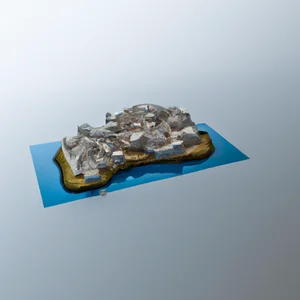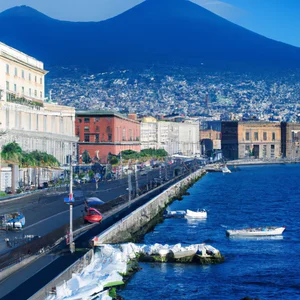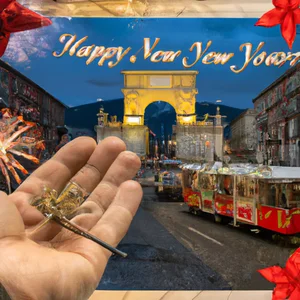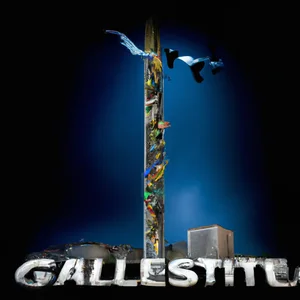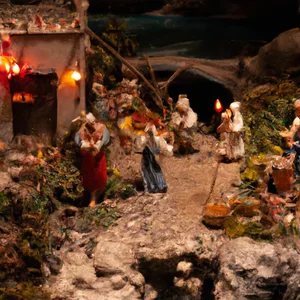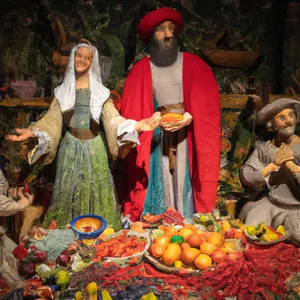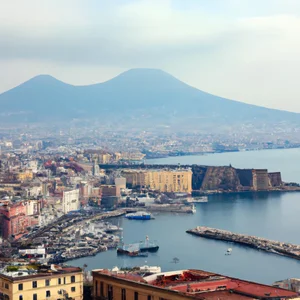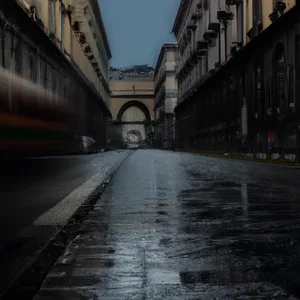Book your experience
Discover the magical Naples through the eyes of Roberto Benigni and Massimo Troisi
Naples, a city that embodies a thousand-year history and a vibrant culture, is a place where authenticity blends with passion, giving life to a unique and engaging atmosphere. Through the eyes of two great interpreters of Italian cinema, Roberto Benigni and Massimo Troisi, it is possible to discover this magical city in a very special way. Both were not only able to describe the nuances of Neapolitan life, but also captured the essence of places which, although different, share a common denominator: the love of beauty and tradition.
In this article, we will take you on a journey through ten emblematic places in Naples, each of which tells a unique story. From the authentic streets of the Quartieri Spagnoli, where time seems to have stopped, to Spaccanapoli, the beating heart of the city, each stop will be an invitation to immerse yourself in the daily life of Neapolitans. We will also discover the mysteries of underground Naples, a real journey through time, and we will get lost in the magnificence of the San Carlo Theatre, symbol of the passion for art.
We cannot forget Vesuvius, which with its majestic presence watches over the city, nor the Caracciolo seafront, perfect for a walk between sea and history. The tradition of nativity scenes in San Gregorio Armeno will take us to the heart of Neapolitan culture, while the local gastronomy will explode in a riot of unmistakable flavours. Finally, the Capodimonte Museum will offer us a look at the rich artistic heritage of the city, and the Gulf of Naples, with its breathtaking views, will give us moments of pure magic. Get ready to discover Naples as you have never seen it, through the words and emotions of two great artists.
The Spanish Quarters and their authenticity
Description
The Quartieri Spagnoli are one of the most authentic and characteristic places in Naples. Located in the heart of the city, between Via Toledo and the Chiaia district, the Quartieri Spagnoli are a labyrinth of narrow and winding streets, stairways and alleys that intersect in a succession of colours, smells and sounds typical of Neapolitan daily life.
History
The Spanish Quarters owe their name to the presence of the Spanish troops who occupied them in the 16th century. Since then, this neighborhood has become the symbol of the authenticity and liveliness of Naples, with its artisan shops, local markets and popular traditions that are handed down from generation to generation.
Culture and traditions
In the Quartieri Spagnoli it is possible to completely immerse yourself in Neapolitan culture, among the stalls of the open-air markets, the alleys full of life and the shops selling typical local traditional products. Here you can breathe the authenticity of Naples, with its customs, its religious festivals and its traditions which are still respected and celebrated with pride today.
Gastronomy
The Quartieri Spagnoli are also the kingdom of Neapolitan gastronomy, with their trattorias and taverns offering typical dishes such as fried pizza, pasta and potatoes and Sfogliatella. Here it is possible to taste the authentic flavors of Neapolitan cuisine, prepared with fresh and genuine ingredients coming directly from local markets.
Conclusions
The Quartieri Spagnoli are a true hidden treasure of Naples, a place where history, culture and tradition come together in a unique and fascinating mix. Visiting the Spanish Quarter means immersing yourself in the authentic soul of Naples, discovering suggestive corners and living an unforgettable experience.
Spaccanapoli: the beating heart of the city
Description
Spaccanapoli is one of the oldest and most fascinating streets in Naples, which divides the historic center into two parts. About 1.2 kilometers long, this narrow and winding road follows the route of the ancient Via Neapolis, which represents the beating heart of the city. Crossing Spaccanapoli, you can admire the authentic Neapolitan soul, made up of narrow alleys, historic buildings, baroque churches and artisan workshops.
Attractions
Along Spaccanapoli you can find numerous attractions, such as the Church of Gesù Nuovo, the monastery of Santa Chiara, the Church of San Domenico Maggiore and the Piazza del Gesù, where the famous statue of the Veiled Christ is located. Furthermore, along the road you can admire the typical local craft shops, where you can buy traditional objects such as Neapolitan nativity scenes, ceramics and inlaid wooden objects.
Gastronomy
Spaccanapoli is also famous for its gastronomy, with numerous historic trattorias and pizzerias offering typical dishes of the Neapolitan tradition, such as pizza margherita, pasta and beans, Sfogliatella and babà. Furthermore, along the road you can find numerous bars and cafes where you can enjoy an authentic Neapolitan coffee or a homemade limoncello.
Atmosphere
Spaccanapoli is a vibrant place full of life, where you can breathe the authentic essence of the city. During the day, the street is animated by tourists and locals walking among the shops and shops, while in the evening it comes alive with stalls and street artists who make the atmosphere even more magical and evocative.
In conclusion, Spaccanapoli is an essential stop for those visiting Naples, a unique place where you can get lost in history, art, gastronomy and tradition, living an unforgettable experience in the beating heart of the city.
Naples underground: a journey through time
A hidden treasure under the city
Underground Naples is a real labyrinth of galleries, cisterns, catacombs and tunnels that extends under the historic center of the city. This incredible system of caves and cavities was dug into the volcanic tuff on which Naples stands and dates back to different historical eras, from the Greco-Roman period to the Middle Ages.
An exciting journey into the past
Exploring underground Naples means taking a journey through time, immersing yourself in the ancient traditions and history of the city. During the guided tour, you can admire the remains of ancient aqueducts, the early Christian catacombs, the Roman cisterns and the caves used as shelters during the Second World War.
A heritage to be preserved and enhanced
Underground Naples is a true hidden treasure that must be preserved and enhanced. Thanks to the commitment of local associations and bodies, it has been possible to open some of the most evocative galleries and underground sites to the public, offering visitors the opportunity to discover an unusual and fascinating side of the city.
Through underground Naples, it is possible to better understand the urban and cultural evolution of Naples over the centuries, discovering the testimonies of a past full of charm and mystery.
The San Carlo Theater and the passion for art
A jewel of art and culture in Naples
The Teatro di San Carlo is one of the oldest and most prestigious opera houses in the world, as well as one of the symbols of the city of Naples. Inaugurated in 1737, the Teatro San Carlo is considered the oldest opera house in Europe still in operation. Its history full of charm and tradition is intertwined with that of the city itself, helping to make Naples one of the cultural capitals of the world.
Since its opening, the San Carlo Theater has hosted the greatest operas and the most famous artists of the time, becoming a point of reference for music and art lovers. Its perfect acoustics and the majesty of the hall give a unique and evocative atmosphere to each show, giving unforgettable emotions to those lucky enough to attend them.
But the San Carlo Theater is not just a place of entertainment, it is also a symbol of the passion and artistic creativity that characterize the city of Naples. Every architectural detail, every decoration, every work of art found inside the theater tells a story, an era, an emotion. Visiting the San Carlo Theater means immersing yourself in a world of beauty and art, letting yourself be conquered by the magic of the stage and the grandeur of the music.
The San Carlo Theater is a place that goes beyond the simple function of a theatrical space, it is a true treasure chest of artistic and cultural treasures that represent the best of the Neapolitan tradition. Its beauty, its history and its importance in the international cultural panorama make the San Carlo Theater an unmissable place for those visiting Naples, a place that enchants and excites, offering moments of pure magic and intense beauty.
Vesuvius: symbol of power and beauty
An iconic volcano
Vesuvius is undoubtedly one of the most iconic symbols of Naples and Campania. Located a few kilometers from the city, the volcano is known throughout the world for the eruption that destroyed Pompeii and Herculaneum in 79 AD. Despite its danger, Vesuvius attracts thousands of tourists every year eager to admire its majesty and beauty.
Excursions and trekking
For those who love adventure and nature, Vesuvius offers numerous hiking and trekking opportunities. There are several paths that lead up to the volcano's crater, offering breathtaking views of the Bay of Naples and the Gulf of Naples. During the excursion it is possible to admire the typical flora and fauna of the Vesuvius National Park and immerse yourself completely in nature.
A unique experience
Climbing Vesuvius is a unique and unforgettable experience. The feeling of being on an active volcano, with its smoke slowly rising from the crater, is truly exciting. The panoramic view enjoyed from the top of Vesuvius is priceless and gives a sense of freedom and wonder.
Don't miss the opportunity to visit Vesuvius during your stay in Naples. It will be an experience that will leave you breathless and will give you indelible memories of your holiday in this splendid city.
The Caracciolo seafront: a walk between sea and history
Description
The Caracciolo seafront is one of the most loved destinations by Neapolitans and tourists who visit the city. It extends for about three kilometers along the sea, offering a breathtaking view of the Gulf of Naples and Vesuvius. This fascinating walk is a perfect combination of sea and history, with numerous points of interest along the way.
Points of interest
One of the most iconic places on the Caracciolo seafront is certainly Castel dell'Ovo, an ancient castle located on a small island connected to the mainland by a bridge. Legend has it that the name of the castle derives from an egg hidden in the foundations, linked to a prophecy about its end.
Continuing along the seafront, you arrive at the Villa Comunale, a public park that offers an oasis of greenery and tranquility in the heart of the city. Here you can admire splendid gardens, fountains and statues, as well as take a relaxing walk along the tree-lined avenues.
Activities
The Caracciolo seafront is the ideal place for a romantic walk at sunset, enjoying the shades of red and orange that color the sky over the bay. Furthermore, along the promenade you can find numerous bars, restaurants and ice cream parlors where you can savor the delicacies of Neapolitan cuisine and enjoy a good coffee overlooking the sea.
For those who love sports, the seafront also offers the possibility of practicing outdoor activities such as jogging, cycling and rollerblading, enjoying the sea breeze and the positive energy that this unique place emanates.
In conclusion, the Caracciolo seafront is an unmissable place during a visit to Naples, where history, sea and culture come together in a perfect mix that enchants the senses and leaves an indelible mark in the hearts of those who travel along it.
San Gregorio Armeno: the street of nativity scenes
Introduction
San Gregorio Armeno is one of the most famous and characteristic streets of Naples, known throughout the world for being the "street of nativity scenes". This charming alley in the heart of the historic center of the city is a destination for tourists and sacred art enthusiasts throughout the year, but especially during the Christmas period, when the artisan workshops display their creations for the traditional nativity scene exhibition.
History and tradition
The tradition of nativity scenes in San Gregorio Armeno dates back to the 18th century, when Neapolitan master craftsmen began creating small sacred sculptures to represent the nativity of Jesus. Today, the shops along the street offer a wide range of nativity scenes of different styles and dimensions, made with care and craftsmanship.
The visit to San Gregorio Armeno is a journey through time to discover the ancient Neapolitan traditions linked to religiosity and manual skills, which are handed down from generation to generation.
Atmosphere and suggestions
Walking along San Gregorio Armeno, you are surrounded by a magical and evocative atmosphere, with the soft lights that illuminate the shop windows and the scents of wood and moss that pervade the air. The sacred sculptures displayed in the shops are true works of art, rich in details and symbols that tell the story of the nativity in a unique and engaging way.
The street is always crowded with visitors who get lost among the stalls in search of the perfect nativity scene to take home as a souvenir or gift, thus helping to keep the city's artisan tradition alive.
Conclusions
San Gregorio Armeno is an unmissable place for anyone visiting Naples, an experience that allows you to immerse yourself in the culture and religious traditions of the city in an authentic and engaging way. The street of nativity scenes is a true artistic and historical treasure, which deserves to be discovered and appreciated by all those who love Neapolitan art and tradition.
Neapolitan gastronomy: an explosion of flavors
Neapolitan cuisine: a rich and varied culinary heritage
Neapolitan gastronomy is one of the most renowned in the world for its authenticity and variety of flavors. The typical dishes of Neapolitan cuisine are the result of a long culinary tradition that has been handed down from generation to generation, keeping the original recipes and ingredients intact.
One of the most famous dishes of Neapolitan cuisine is certainly pizza, born in Naples and becoming a symbol of the city throughout the world. True Neapolitan pizza is characterized by its thin and soft base, topped with tomato, buffalo mozzarella, basil and extra virgin olive oil. Another Neapolitan specialty not to be missed is pasta alla Genovese, a rich and tasty dish based on onions, meat and tomatoes.
The Neapolitan food and wine tradition is rich in dishes based on fresh fish, such as fried fish, squid and potatoes, and seafood pasta. Among the typical desserts of the Neapolitan tradition, not to be missed are the rum babas, the Sfogliatelle and the Neapolitan pastiera, a typical Easter dessert.
Traditional taverns and restaurants in Naples
To fully savor Neapolitan gastronomy, it is advisable to stop in one of the many traditional taverns and restaurants in the city. Here you can taste the typical dishes of Neapolitan cuisine prepared with fresh, high-quality ingredients, following recipes handed down over time.
The taverns and restaurants of Naples are welcoming and familiar places, where you can enjoy an authentic and unforgettable culinary experience. Don't miss the opportunity to savor Neapolitan cuisine, a real journey into the flavors and traditions of the city.
The Capodimonte Museum and its artistic heritage
A precious collection of works of art
The Capodimonte Museum is one of the most important art museums in Italy and in the world. Located in a stunning 18th-century royal residence, the museum houses a vast collection of artworks ranging from the Middle Ages to the contemporary. Among the most famous works kept inside there are paintings by artists such as Caravaggio, Titian, Raphael, and many others.
Artistic heritage
The Capodimonte Museum boasts a rich collection of works of art which includes paintings, sculptures, ceramics, and furnishings. Among the most important works you can admire masterpieces such as the “Flagellation of Christ” by Caravaggio, the “Madonna and Child” by Raphael, and the “Danae” by Titian. Furthermore, the museum also houses a large collection of antique porcelain and glass, which testify to the art and craftsmanship of the era.
Visit to the museum
The Capodimonte Museum offers visitors the opportunity to immerse themselves in Neapolitan art and culture. During the visit it is possible to admire the works exhibited in the sumptuous rooms of the royal palace, which still retain the regal atmosphere of times gone by. Furthermore, the museum regularly organizes temporary exhibitions and cultural events that offer visitors the opportunity to discover new aspects of art and history.
Tips for visiting
To fully enjoy the experience at the Capodimonte Museum it is advisable to dedicate at least half a day to the visit. It is also advisable to book tickets in advance, especially during peak tourist periods. During the visit it is possible to take advantage of the services offered by the museum, such as audio guides and guided tours, which allow you to deepen your knowledge of the works on display.
In conclusion, the Capodimonte Museum is an unmissable place for art and culture lovers. Its rich collection of works of art and its splendid royal palace offer visitors a unique and unforgettable experience, allowing them to discover the extraordinary beauty and rich history of Naples.

